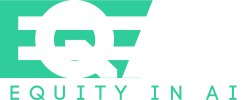Artificial intelligence (AI) is rapidly finding its way into every stage of the hiring process, impacting how companies source, screen, and select candidates. While AI offers undeniable efficiency, automation also carries significant risks of perpetuating existing biases and introducing new discriminatory practices. Understanding where bias can occur and how to mitigate it is now an essential task for any organization committed to equity in their recruitment practices.
How AI Bias Seeps into the Hiring Process
AI systems in hiring function like any machine learning algorithm – they find patterns in vast amounts of data to make predictions and recommendations. The trouble arises when the data itself reflects historical biases or incomplete information. Here’s where bias can become embedded in AI-assisted hiring:
- Job Advertisements & Candidate Sourcing: AI-powered tools used to write job descriptions or target ads on social media can perpetuate harmful word associations. Studies have shown that certain leadership-related words are more frequently paired with masculine pronouns, potentially limiting the pool of female applicants who see the ad in the first place (The Global Observatory, 2023).
- Resume Screening: If AI systems are predominantly trained on resumes reflecting traditional career paths (often white and male), they may overlook talented individuals from diverse backgrounds, those with caregiving gaps, or those with unconventional career trajectories.
- Video Interviews & Assessments: Facial recognition, speech analysis, and even personality assessment tools carry the potential for bias. AI may misinterpret facial expressions, accents, or neurodivergent behaviors, leading to unfair disadvantage (Forbes, 2020).
- Predictive Modeling: AI used to predict job fit or performance may rely on historical company data. If past hiring decisions were biased, the AI system risks inheriting and amplifying those biases over time, creating discriminatory feedback loops (UN Women, 2023).
What Companies Can Do: Proactive Bias Mitigation
Organizations serious about inclusive hiring cannot rely solely on AI vendors’ claims of unbiased solutions. They must take proactive steps to address the problem:
- Algorithmic Transparency & Auditing: Companies should demand transparency from vendors providing AI hiring tools and work proactively to understand training data, decision logic, and potential sources of bias (International Women’s Day, n.d.). Before deployment, internal or third-party bias audits can identify discriminatory patterns and allow for correction. Regular re-auditing is essential even after a tool is in use.
- Diverse Teams & Inclusive Design: AI developers and HR teams using these tools should reflect the diversity of the candidate pool. Inclusive design principles and diverse user testing are crucial for catching unintentional bias.
- Human-in-the-Loop: AI-assisted hiring should never replace human judgment. Recruiters and HR professionals need to be trained on how AI tools function and their potential limitations, with their insights providing a critical layer of context and fairness review (SC Magazine, 2023).
- Candidate Transparency & Feedback Mechanisms: Organizations using AI should inform candidates if algorithmic tools are involved in screening or decision-making. Provide clear feedback mechanisms where individuals can seek clarification or request human review. This fosters trust and accountability (OECD AI, 2023).
- Evolving Regulation & Accountability: As legislation around AI in hiring emerges (such as New York City’s recent laws), companies should stay informed of their legal obligations. Beyond compliance, embracing evolving ethical guidelines on AI will become an expected part of responsible business practices.
Conclusion
AI has the potential to streamline hiring processes and even identify promising candidates that traditional methods might overlook. However, without conscious intervention, AI can also replicate and exacerbate existing inequalities. By understanding the sources of bias, implementing proactive mitigation strategies, and prioritizing transparency and human oversight, businesses can harness the potential of AI while working towards a more equitable and inclusive hiring landscape.
References
- Forbes. (2020, March 2). AI Bias Could Put Women’s Lives At Risk – A Challenge For Regulators. Retrieved from https://www.forbes.com/sites/carmenniethammer/2020/03/02/ai-bias-could-put-womens-lives-at-riska-challenge-for-regulators/
- International Women’s Day. (n.d.). Gender and AI: Addressing bias in artificial intelligence. Retrieved from https://www.internationalwomensday.com/Missions/14458/Gender-and-AI-Addressing-bias-in-artificial-intelligence
- OECD AI. (2023, March 8). Artificially Inequitable? AI and closing the gender gap. Retrieved from https://oecd.ai/en/wonk/closing-the-gender-gap
- SC Magazine. (2023, September 27). Gender bias in AI: ‘Where are all the women?’ Retrieved from https://www.scmagazine.com/feature/gender-bias-in-ai-where-are-all-the-women
- The Global Observatory. (2023, March 17). Addressing Gender Bias to Achieve Ethical AI. Retrieved from https://theglobalobservatory.org/2023/03/gender-bias-ethical-artificial-intelligence/
- UN Women – Headquarters. (2023, September 29). HeForShe summit discusses gender bias in AI and how to encourage male feminist allies. Retrieved from https://www.unwomen.org/en/news-stories/feature-story/2023/09/heforshe-summit-discusses-gender-bias-in-ai-and-how-to-encourage-male-feminist-allies









